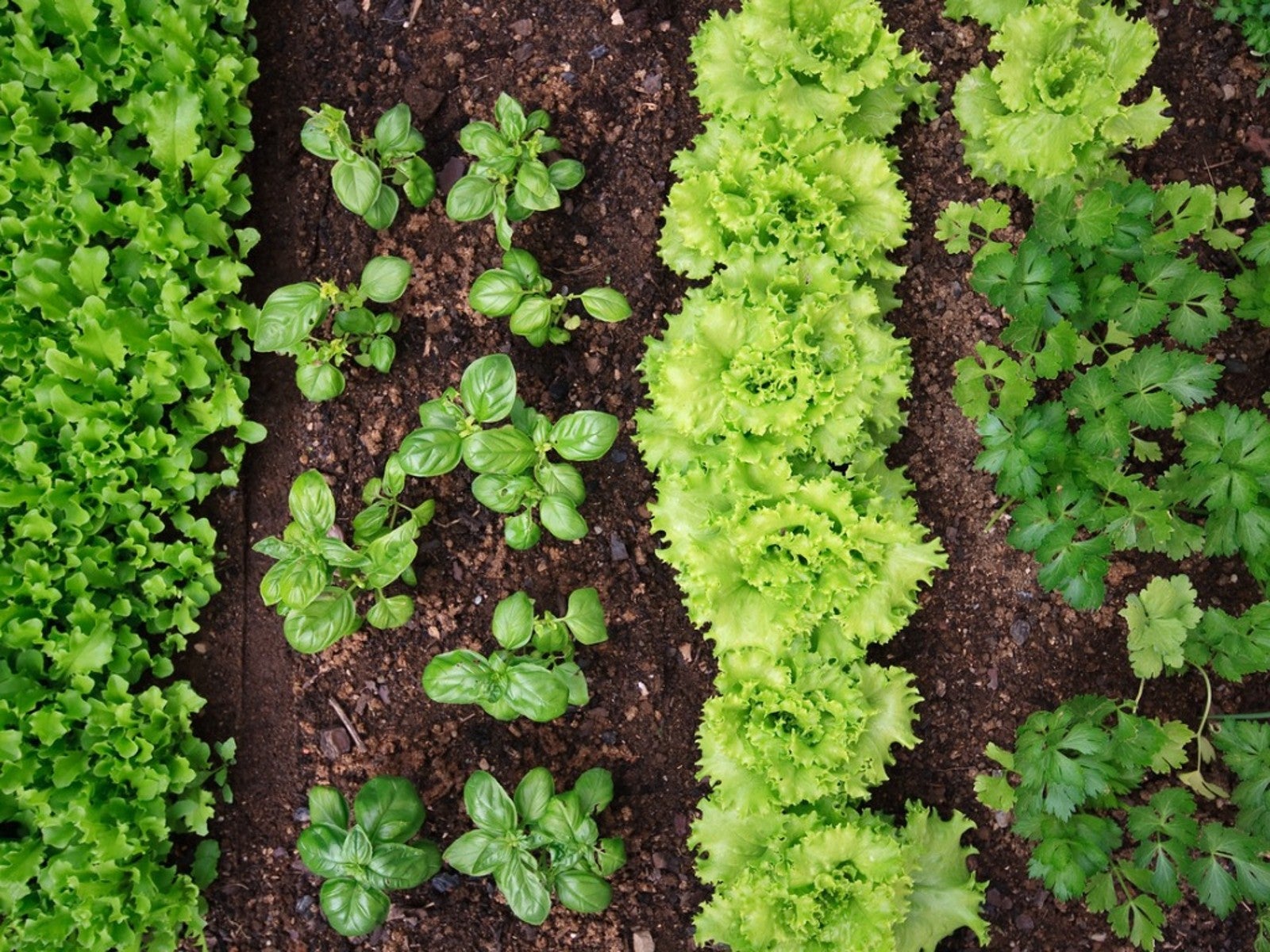Companion Planting With Basil


The sweet aroma of basil can fill my kitchen anytime, but this herb's strong fragrance also makes it a popular pest-repelling plant for companion gardening. Basil prefers a sunny location with good drainage and is best paired with plants that have similar cultural requirements. Not sure what to plant with basil? Let's find out.
Basil as a Companion Plant
Sweet basil (Ocimum basilicum) is an easily propagated warm-weather herb which can survive winters in USDA zones 9 to 11. In other climates, this herb is often grown as a outdoor annual in the summer or in pots that can easily be moved indoors when the temperature drops.
Due to its strong scent, basil has biochemical pest suppression abilities that can benefit a range of companion plants. It's believed insects rely on their sense of smell to locate their favorite host plants. Strong-smelling plants, like basil, can mask the smell of other plants and confuse pests.
When selecting a companion plant for basil, consider species which need protection from the following pests. Each is known to be repelled by the strong scent of basil:
- Asparagus beetles
- Flies
- Mosquitoes
- Potato bugs
- Thrips
- Tomato hornworms
Pairing Plants With Basil
Ideally, companion planting basil with other crops produces mutual benefits for each member of the group. Basil benefits when paired with plants that reduce populations of aphids, Japanese beetles, slugs and snails. Companion plants should either repel these basil pests or attract predatory insects which feed upon them.
The latter is the case when pairing basil with asparagus. When planted adjacent to one another, the smell of basil deters aspargus beetles. Likewise, asparagus attracts ladybugs. It's estimated that each of these predatory insects can eat 50 or more aphids per day.
Another mutually beneficial example of companion gardening occurs when planting basil with tomatoes. Studies have indicated basil deters tomato hornworms. These devastating pests can quickly strip the leaves from tomato vines and can be extremely difficult to remove due to their camoflauge.
Gardening tips, videos, info and more delivered right to your inbox!
Sign up for the Gardening Know How newsletter today and receive a free copy of our e-book "How to Grow Delicious Tomatoes".
Basil benefits from this arrangement as well. Tomato plants provide shade from the hot afternoon sun and help retain soil moisture levels. This helps prevent basil from wilting or drooping and reduces the amount of stress these plants undergo in hot, dry weather.
Basil Companion Plants
Aside from asparagus and tomatoes, many other species of vegetables, herbs and flowers benefit from the insect-repelling capabilities of basil. Here are a few of the popular plants which gardeners partner with basil in companion beds:

Laura Miller has been gardening all her life. Holding a degree in Biology, Nutrition, and Agriculture, Laura's area of expertise is vegetables, herbs, and all things edible. She lives in Ohio.
-
 Looking For Plants To Give You The Soft And Fuzzies? Try These 5 Fuzzy Leaf Plant Options
Looking For Plants To Give You The Soft And Fuzzies? Try These 5 Fuzzy Leaf Plant OptionsLovers of texture, drama, silver foliage and tactile plants will adore these special sensory garden additions. These fuzzy leaf plant options will leave you all aglow
By Susan Albert
-
 Get Ready For A Summer Of Hummers! Grow These Full Sun Hummingbird Plants and Flowers
Get Ready For A Summer Of Hummers! Grow These Full Sun Hummingbird Plants and FlowersIf you’re lucky enough to enjoy a sunny backyard, make sure you are maxing out on your pollinator opportunities and grow these full sun hummingbird plants and flowers
By Tonya Barnett